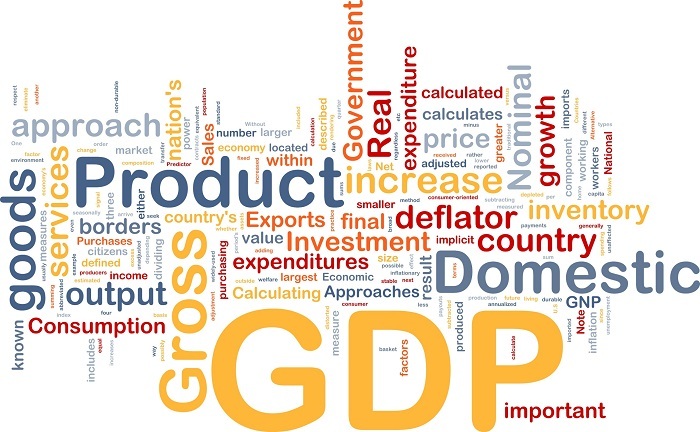
 Data Structure
Data Structure Networking
Networking RDBMS
RDBMS Operating System
Operating System Java
Java MS Excel
MS Excel iOS
iOS HTML
HTML CSS
CSS Android
Android Python
Python C Programming
C Programming C++
C++ C#
C# MongoDB
MongoDB MySQL
MySQL Javascript
Javascript PHP
PHPPhysics
Chemistry
Biology
Mathematics
English
Economics
Psychology
Social Studies
Fashion Studies
Legal Studies
- Selected Reading
- UPSC IAS Exams Notes
- Developer's Best Practices
- Questions and Answers
- Effective Resume Writing
- HR Interview Questions
- Computer Glossary
- Who is Who
Peace Dividend
Introduction
The government should allocate funds in such a way that it benefits the economy for a long term. On that note, the term peace dividend has garnered much attention in international and domestic circles.

As wars create disruption to the country as well as economy at large, instead of splurging money on military restoration, the government diverts those funds to construct the economy and welfare at large. In simple words, this concept revolves around the idea of how military funds used for economic purposes.
Definition of Peace Dividend
The term "peace dividend" was first used in the 1960s during the Cold War. It was used as a strategy to recoup the economy during post-war crisis. Since the country needs restructuring after any war, the new government took steps necessary steps to combat the issue. All the military funds and resources were exploited by the country to maximize the standard of living. According to the International Monetary Fund (IMF), these kinds of decisions would have a nosediving effect on the GDP, but otherwise in the long-run.
Overview of Peace Dividend
Peace dividend rebuilds every sector including infrastructure, education, and healthcare, among other areas. The increased investment in these categories helps to increase the country's economy and improve the standard of living. The rate of poverty also decreases, followed by reduced crime rates, and increased political stability.

Impact on GDP and Dividend
An example of the potential impact of a peace dividend is the actual case of South Africa. After the end of apartheid, the South African government said they would be reducing military spending and redirecting the resources towards the social and welfare programs of the economy. The GDP spending in 1992 on military spending came down from 4.4%.
In 2013, military spending had fallen to 1.6% of the GDP, which had a significant impact. The freed funds were used in social welfare programs such as housing, healthcare, and education. This investment in social welfare programs helped to reduce poverty and improve living standards in South Africa.
Another example is the real case of Costa Rica, which destroyed its military in 1948 and redirected those resources towards social welfare programs. This helped Costa Rica become Latin America's most prosperous and stable country.
What the IMF Considers Peace Dividend?
When there is a shift in a country's posture or the war comes to an end, the economy needs a load of money to come back to its original shape. Say, the military has cut their spending by 20 percent. Now, what happens next?
The IMF’s take on this aspect for the short-run is that the total demand plummets, resulting in plunging GDP. In the long-run, the downfall of interest rates calls for fresh private sector investments. This gives rise to economic activities in the country, covering up the short-run losses. Long story short, the IMF believes that peace dividend curtails economic growth in the short-run, but projects sound development in the long-run.
It is shown that the country's resources are wasted on military expenditure. Instead, IMF believed that it would be more useful if it’s allocated to social welfare programs like education, building new infrastructure, etc.
Drawbacks of Peace Dividend
While peace dividend can offer some reeling benefits to the war crisis countries, this approach has its share of drawbacks as well. For starters, reduced military spending can result in job losses in the defense industry.

Military spending diverted to rebuild the economy
Another potential drawback is the diversion of resources away from national security concerns. Reducing defense spending could leave a country vulnerable to external threats because of compromising on the national security.
Examples of Peace Dividends
Many examples have been of the peace dividend being implemented in different countries. The most famous example of the peace dividend is the case of Germany after the Cold War. Germany reduced its military spending and redirected those resources toward economic development and social welfare programs. This investment helped to boost the German economy and improve living standards.
Another example is the case of Uganda. The civil war ended in the 1980s, making Uganda consider its resource allocation. Uganda wanted to improve its condition, so it reduced military spending. The resources became crucial for social and economic programs to improve living standards.
Conclusion
Peace dividend is a term used to refer to the reduction of military expenditure and exploitation of resources for the social and welfare programs of the country. The IMF considers the peace dividend an important tool for promoting economic development and reducing poverty.
Peace dividends have their cons, but successful examples show their implementation in different countries with their pros. The peace dividend represents a promising avenue for promoting economic development and social welfare in countries worldwide.
FAQs
Q1. What is a peace dividend?
Ans. A peace dividend refers to the economic and social benefits provided to the country by reducing military spending. The resources of the military spending are allocated to the social and welfare programs to reduce poverty and improve the country's living standards.
Q2. What are some potential drawbacks of implementing the peace dividend?
Ans. One potential drawback is the loss of jobs resulting from reduced military spending. Another potential drawback is diversifying resources away from national security concerns, which could leave a country vulnerable to external threats.
Q3. Can the peace dividend be implemented in countries currently experiencing conflict?
Ans. Implementing the peace dividend in countries currently having a conflict is difficult. The groundwork for its implementation can be laid while the countries remain in conflict. The military spending is reduced with all those funds and resources and sent to the social and welfare programs to increase the standard of living.

